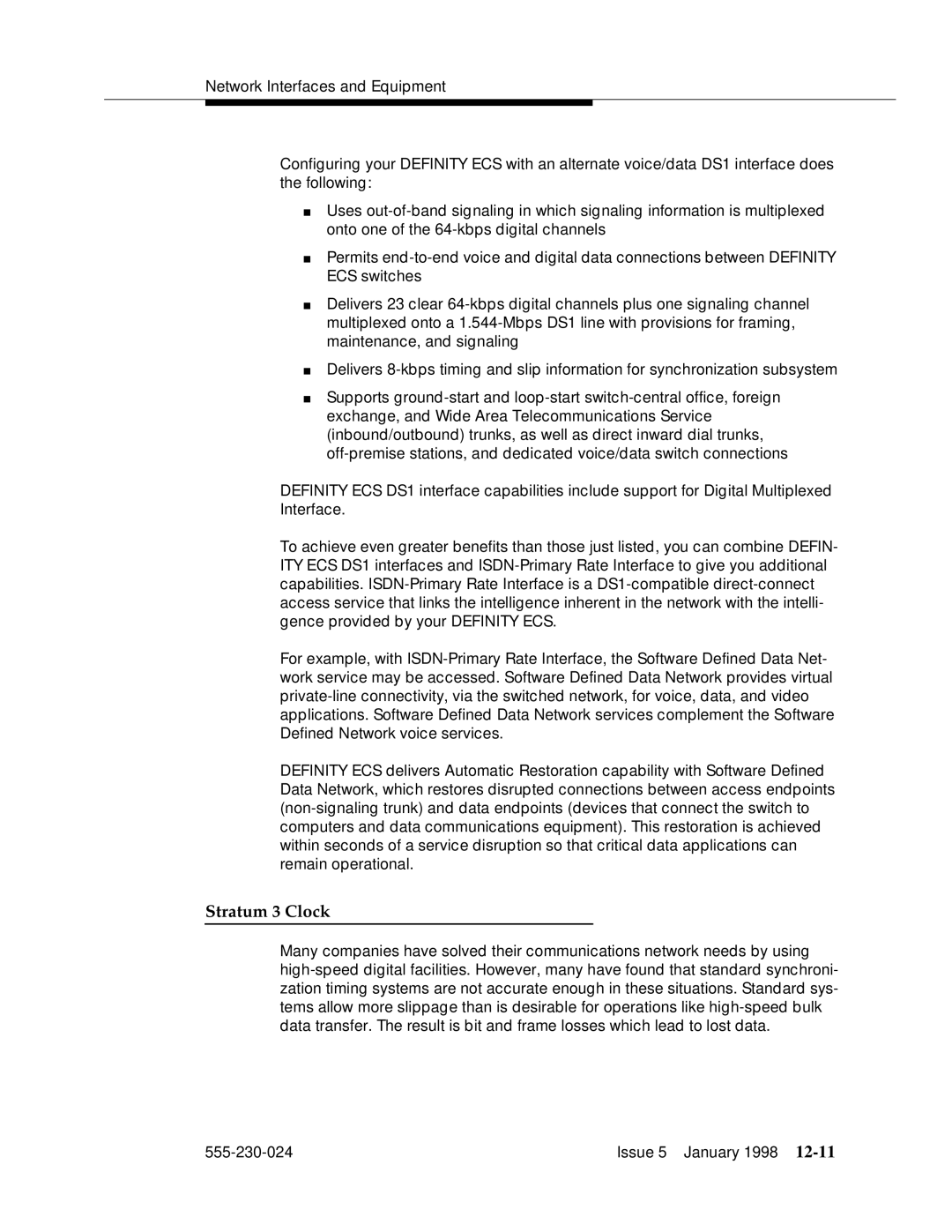
Network Interfaces and Equipment
Configuring your DEFINITY ECS with an alternate voice/data DS1 interface does the following:
■Uses
■Permits
■Delivers 23 clear
■Delivers
■Supports
DEFINITY ECS DS1 interface capabilities include support for Digital Multiplexed Interface.
To achieve even greater benefits than those just listed, you can combine DEFIN- ITY ECS DS1 interfaces and
For example, with
DEFINITY ECS delivers Automatic Restoration capability with Software Defined Data Network, which restores disrupted connections between access endpoints
Stratum 3 Clock
Many companies have solved their communications network needs by using
Issue 5 January 1998 |
